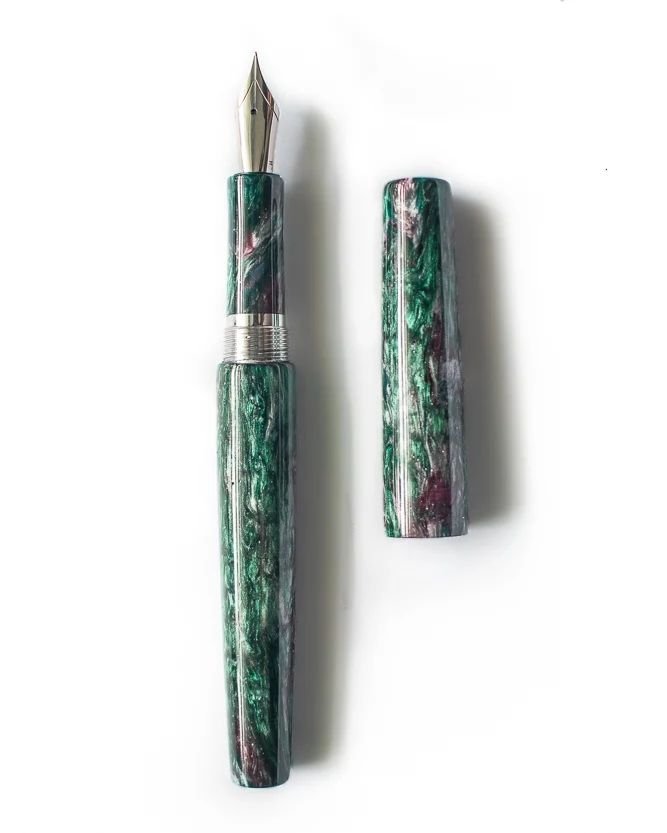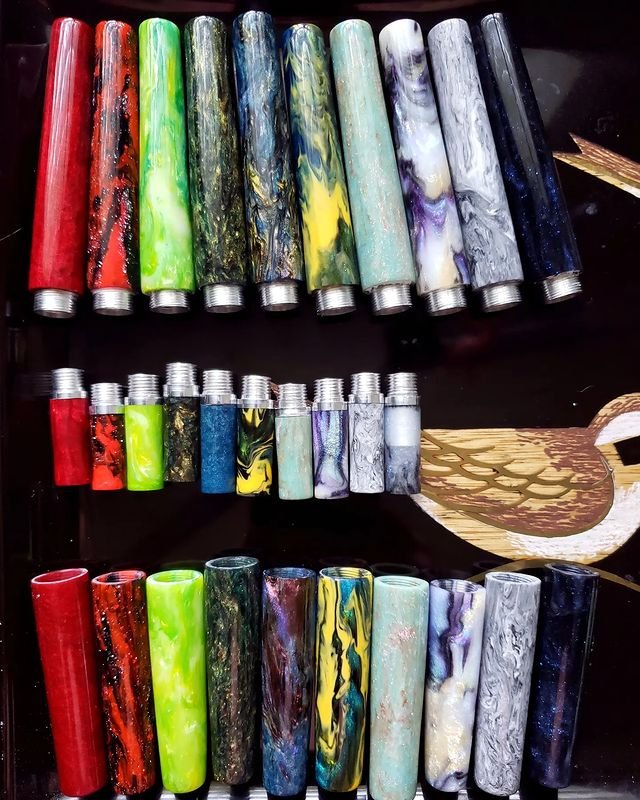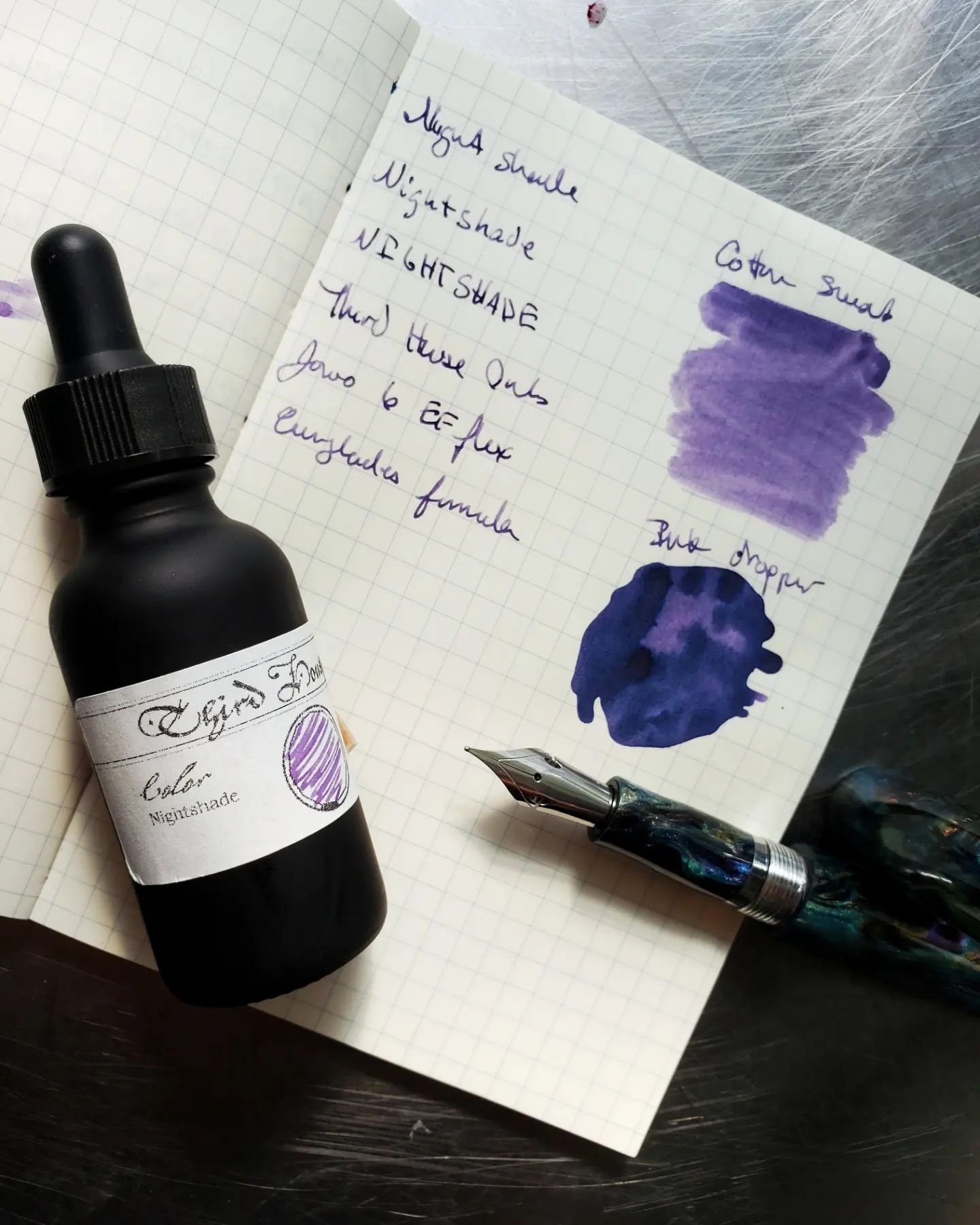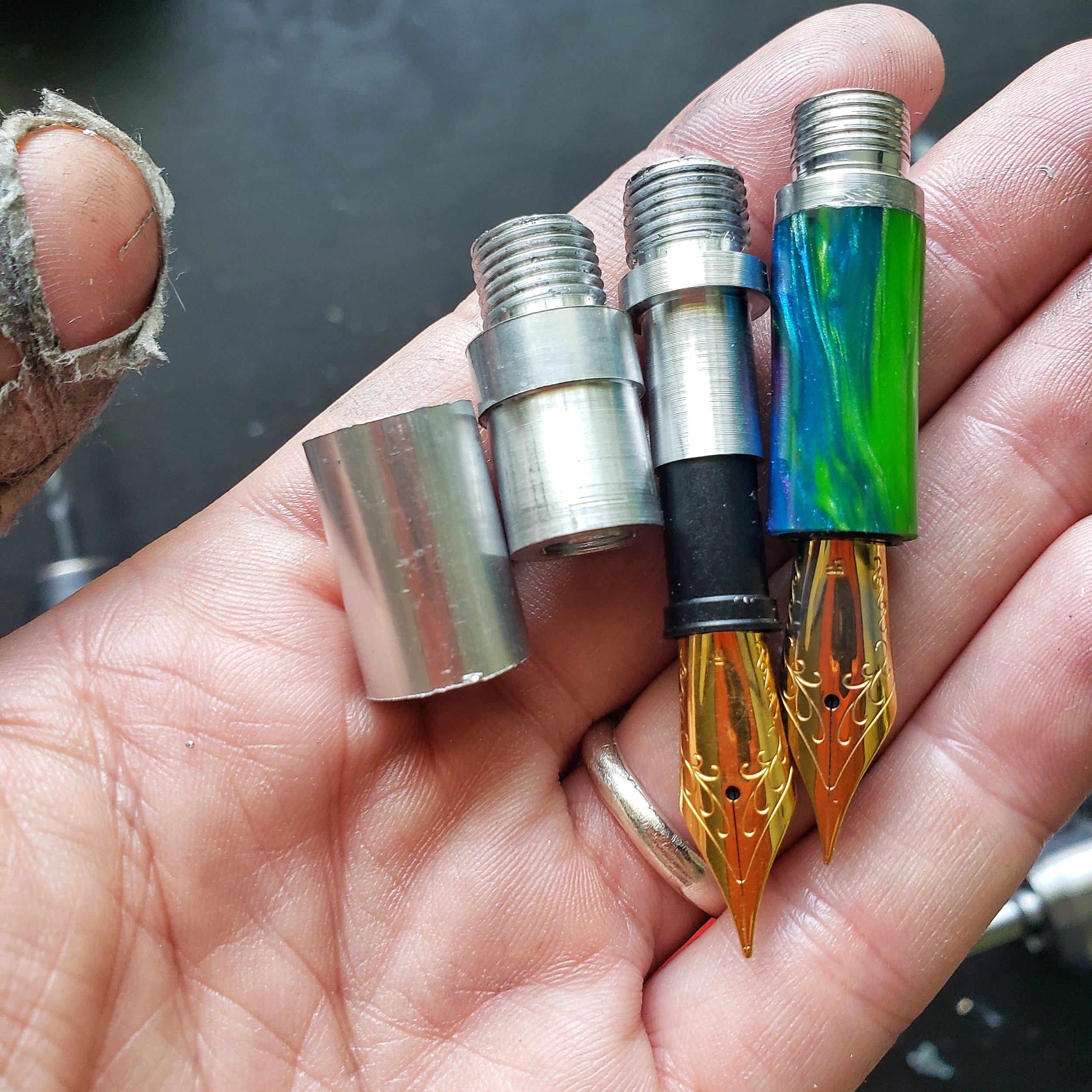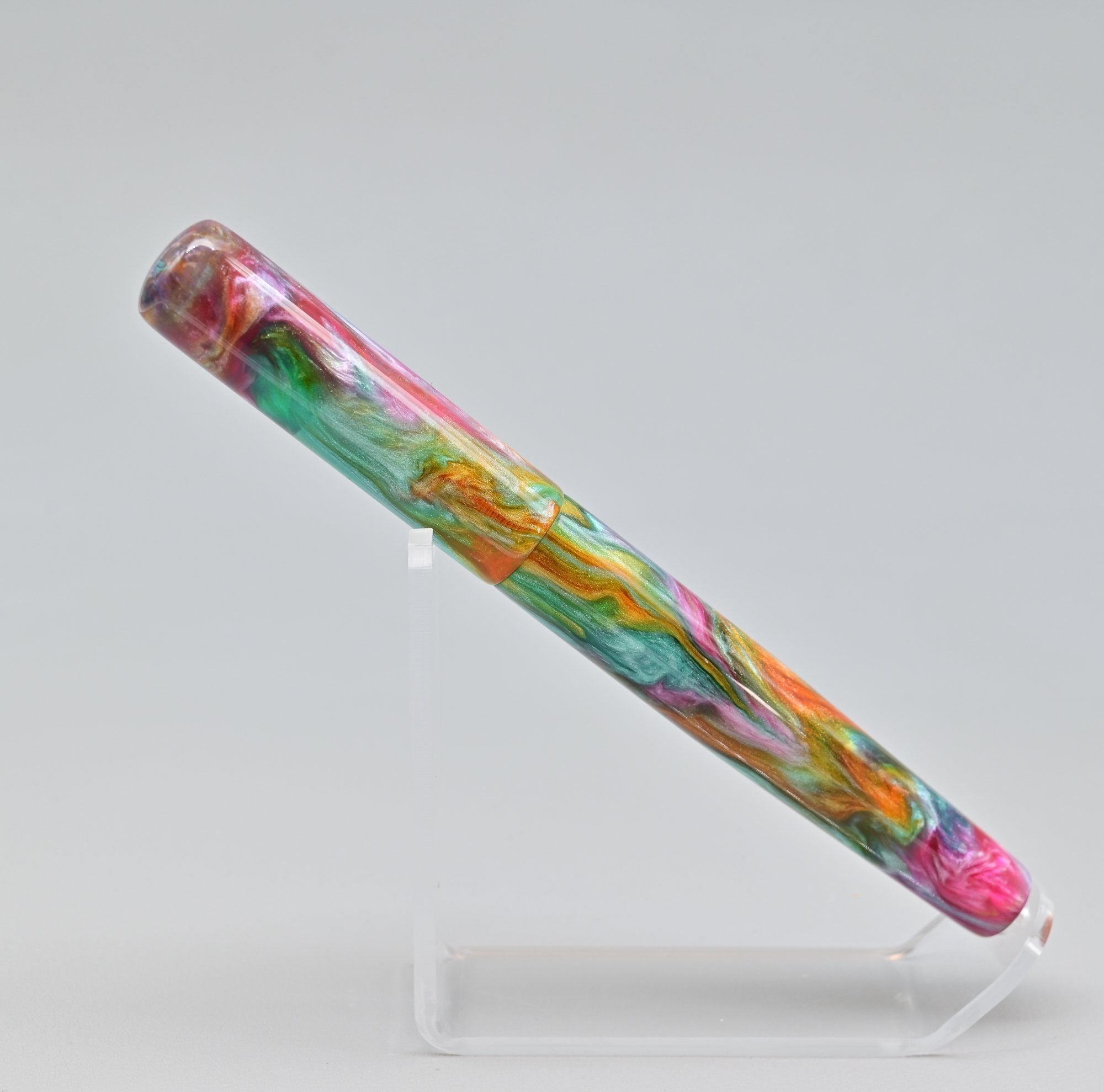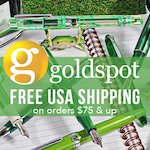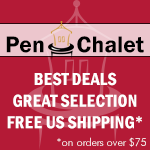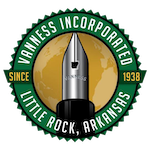(Caroline Foty's first fountain pen was a 1970s Sheaffer No Nonsense that still writes perfectly. Since she discovered pens by independent makers, she wants "one of each, please" and wants to meet all the makers. Maybe you do, too. She lives in Baltimore with pens, cats, and all kinds of fiber arts supplies.)
After writing these columns for over a year, I think I can break the fourth wall to tell you that Abigail Markov’s Instagram makes me tired. She’s like the Hindu goddess Kali with the six arms, each one spinning a different plate: pens, ink, jewelry, soap, choir, kids…. Whew! What’s going on here??
It started with her mother. “She loved fountain pens. I remember all the brand names from going to stores with her, even if she didn’t always buy something.” She and her late husband loved pens, and she said to him, “You know, we could make these,” so he bought a wood lathe and started making pens. “He didn’t let me near it, so I started casting the materials with supplies I had on hand from art.” When he passed away, she thought it was a shame to give it up because he wasn’t there anymore, so she taught herself to do kit pens, and then kitless pens. Shop creep came quickly with the need for a metal lathe to do all of the things she wanted to do.
The Saturn.
Markov’s first pen model was called the Saturn – it was a rollerball pen with a metal fidget spinner in the pen body. Her current flagship model, the Bebe, came about as a way to create a fountain pen that is fun and more affordable than the Saturn with all its more involved metalwork – a sub-$200 daily writer. “I wanted to make something able to withstand the kind of abuse I would put it through.” The Bebe has aluminum parts as well as resin, but it isn’t heavy. “My resin is lighter than most, it’s polyester resin. Nobody likes working with it because it will explode if your angles aren’t right, but it’s lightweight and durable, it polishes like glass, and the colors stay bright.” She makes her own metal parts from rod stock – aluminum currently, and some brass is on the way, which she finds more fun to work with.
The Bebe.
Markov’s soap business was created to help fund the rehab of the farm in rural Florida that she and her husband had undertaken. “The design aspect of soap was very close to some of the art I had done.” With soap came incense that wouldn’t give her a headache.
Perhaps her most complex endeavor has been the creation of Third House Inks. You may have noticed that the ink bottles you buy from your favorite manufacturer don’t have lists of ingredients on them. Nobody really talks about what’s inside those bottles, and there are undoubtedly trade secrets involved. So figuring out how to make ink seems like a rather tall order. For Markov, it started with a fiber arts interest. “Eighteen years ago, my first husband and I were stationed in Germany and my youngest had just been born – I was home all the time, so I took up knitting.” Of course this led to spinning, weaving, and dyeing her own yarn and fiber. “I wanted to dye yarn, so I did some dyeing. When I wanted to make ink, it seemed like it involved ingredients I already had from soap making and dyeing.”
To find out what really needed to be in the bottle, she started looking up and reading patents for different kinds of inks, and began iterating. After releasing her Version 1, she got a lot of feedback about the ink’s behavior in pens and on paper, and started tweaking her ratios to get better results. After about forty small incremental batches she arrived at Version 2. She now produces close to a dozen colors.
With pens, ink, soap, incense, jewelry, and driving her youngest a long distance to his magnet high school, oh, and rehabbing a farm, you would think every second would be crammed full. But Markov is also in a community choir. “I sang in a choir in eighth grade, but it wasn’t until my kids were older and I stopped moving around that I joined a community choir. People say, ‘Why would you want to go be bad at something with other people?’ Because it’s fun! And we’re actually pretty good.”
Even while juggling all of these endeavors, Markov is always inspired with new ideas. “I have more ideas than I even have time to write down. So many people on social media are making interesting jewelry, sculpture, art – so many ideas I can use.” Future plans include a clip design, an eyedropper pen design, a piston fill design, and experiments with using titanium as the metal component in her pens. She wants to make more “art pens – similar to the concept of the Saturn, but with more moving parts.” She is also looking to move her ink business to wholesale, once she takes in feedback on Version 2.
It can’t be entirely coincidental that the goddess Kali comes to mind when taking in the scope of Markov’s endeavors, and not only because her cat’s name is Kali. “I have what you might call a ‘kitless faith process’ – also called chaos magic.” Wikipedia says chaos magic practitioners “… treat belief as a tool, often creating their own idiosyncratic magical systems and frequently borrowing from other magical traditions, religious movements, popular culture and various strands of philosophy.” For the past few years, Markov has been delving into aspects of Kali. “Personification of traits helps us deal with hard things. Kali shows that you are not lesser for having anger, frustration, trauma, or grief.”
All those arms are just an extra perk.
Abigail Markov’s work can be seen on her Instagram, her website, and at the Orlando Pen Show.
Enjoy reading The Pen Addict? Then consider becoming a member to receive additional weekly content, giveaways, and discounts in The Pen Addict shop. Plus, you support me and the site directly, for which I am very grateful.
Membership starts at just $5/month, with a discounted annual option available. To find out more about membership click here and join us!



